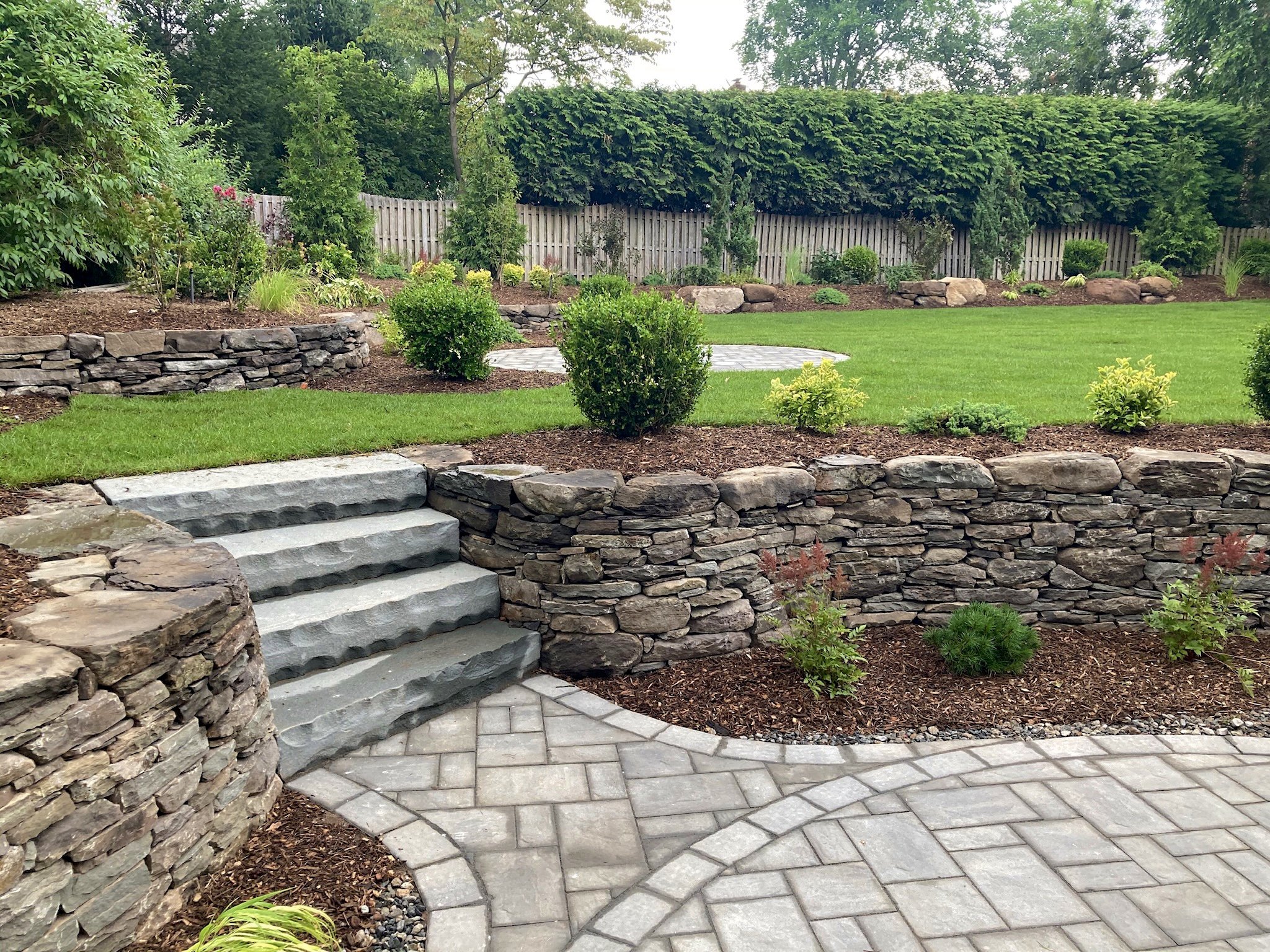Pave a Path and Enjoy the Journey
A path to a beautiful garden or yard creates an invitation for visitors, a scenic place to walk and sometimes just a convenient route to get where you need to go. A path doesn’t always need to follow a specific route and sometimes, the more twists and turns, the better. A path can be the ‘bones’ of a backyard or garden space and wind straight through or simply a point A to point B design.
For a more Zen-like approach, consider your path part of the land and work with existing rocks, elevations and large trees, instead of against them. The Latin phrase genius loci means exactly this: the spirit of the place. Instead of changing what’s already there, work with it!
Whatever the plan is for your path, it’s important to make sure your design works well with your existing space and you take into consideration materials and maintenance. Let the experts at Joe Antine Landscape Design help you find the right path.
Here are a few points to consider:
Materials. Determine your path’s materials. Turf is likely the least expensive material and the most comfortable walking surface. If your path gets adequate sunlight and you like the like of a green grass, this may be your option. Gravel (or pea stone) can be very budget-friendly and easy to maintain. Another idea is a simple path made from mulch. Other materials, like brick, flagstone and slate may be more pricey yet durable. For a more interesting look, you can use a combination of materials, such as wood mulch and pavers. Make sure your materials handle water well (be careful, slate can be slippery when wet) and if weeds are an issue, remember to use landscape fabric or weed barrier.
Bordering plants. Determine if you want the lush look of bordering plants overflowing onto the path or a neat and trim look of small, compact plants. Some plants, like Irish moss and Woolly thyme, don’t mind being stepped on and can actually become part of the walkway itself. Other plants won’t tolerate foot traffic. Ornamental grasses and bushes like lavender can provide a decorative look, just remember there will be lots of maintenance involved. Try and steer clear of any vines, like ivy, that will grow quickly and can be easily tripped over.

